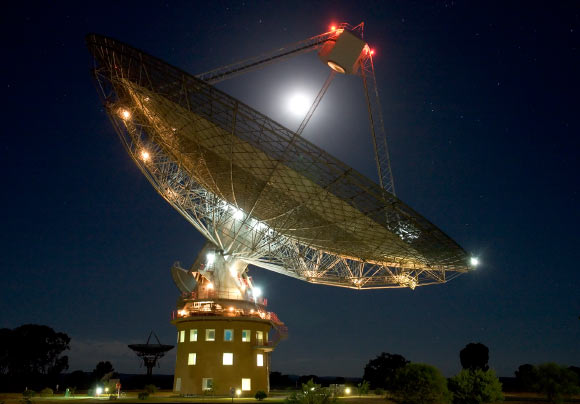Astronomers to Search for Alien Signals from TESS Exoplanets | Astronomy – Sci-News.com
Extrasolar planets discovered by NASA’s Transiting Exoplanet Survey Satellite (TESS) will be scanned for ‘technosignatures’ — indicators of technology that may have been developed by advanced alien civilizations — by astronomers from the Breakthrough Listen initiative.

The Breakthrough Listen initiative is the largest ever scientific research program aimed at finding evidence of advanced civilizations beyond Earth. Image credit: Shaun Amy.
Technosignature searches — also known as SETI (the Search for Extraterrestrial Intelligence) — use powerful telescopes to look for signals coming from space that appear to have arisen from transmitters, propulsion devices, or other engineering.
No unambiguous technosignatures have been seen to date, but the chances of detection are higher than they have ever been, in large part due to Breakthrough Listen.
“It’s exciting that the world’s most powerful SETI search, with our partner facilities across the globe, will be collaborating with the TESS team and our most capable planet-hunting machine,” said Dr. S. Pete Worden, Executive Director of the Breakthrough Initiatives.
“We’re looking forward to working together as we try to answer one of the most profound questions about our place in the Universe: Are we alone?”
The collaboration will expand Breakthrough Listen’s target list (adding over 1,000 ‘objects of interest’ identified by TESS).
It will also refine Breakthrough Listen’s analysis strategy (for example, utilizing new knowledge about planetary alignments to predict when transmissions might be more likely to occur); and provide more meaningful statistics in the event of non-detections.
Observations will take place using Breakthrough Listen’s primary facilities (the Green Bank and Parkes Telescopes, MeerKAT, and the Automated Planet Finder), as well as partner facilities including VERITAS, NenuFAR, FAST, the Murchison Widefield Array, LOFAR stations in Ireland and Sweden, Jodrell Bank Observatory and e-MERLIN, Keck Observatory, and the Sardinia Radio Telescope, along with the SETI Institute’s Allen Telescope Array.
Most of the TESS targets are relatively close to Earth, enabling technosignature searches to probe for fainter transmitters.
And because TESS only sees planets that pass in front of their host star as viewed from Earth, all the planetary systems it detects will be edge-on.
A large fraction (roughly 70%) of radio leakage from Earth-based transmitters is emitted in the plane of Earth’s orbit; if the same is true for any transmitters developed by extraterrestrial intelligence, observing the systems edge-on will offer the best chance of detection.
In addition to targeting of TESS planets with Breakthrough Listen facilities, the TESS lightcurves (how the brightness of stars changes over time) themselves will be searched for anomalies.
A planet transit produces a well-understood variation in detected light from the star, but large-scale engineering projects (for example, ‘megastructures’ such as Dyson spheres) could block the stellar light in more complex ways.
The TESS analysis pipeline is in essence a wide-field anomaly detector, and stars that behave strangely are interesting not just as technosignature candidates, but as potential laboratories for studying interesting astrophysics.
“The recent discovery by of KIC 8462852 (also known as Tabby’s star or Boyajian’s star), an object with wild, and apparently random, variations in its lightcurve, sparked great excitement and a range of possible explanations, of which megastructures were just one,” said Dr. Andrew Siemion, leader of the Breakthrough Listen science team at the University of California.
“Follow-up observations have suggested that dust particles in orbit around the star are responsible for the dimming, but studies of anomalies like this are expanding our knowledge of astrophysics, as well as casting a wider net in the search for technosignatures.”
“We are very enthusiastic about joining the Breakthrough Listen SETI search,” said MIT Professor Sara Seager, TESS Deputy Science Director.
“Out of all the exoplanet endeavors only SETI holds the promise for identifying signs of intelligent life.”




